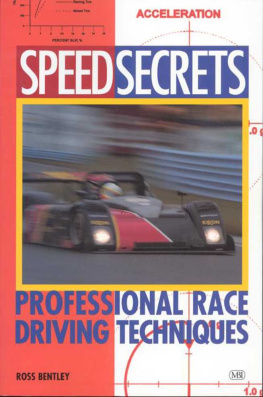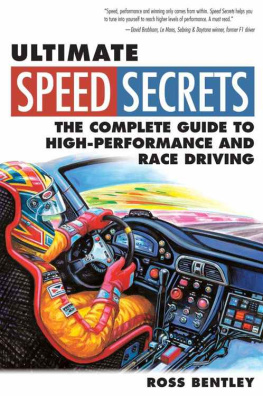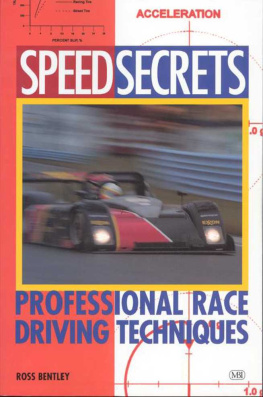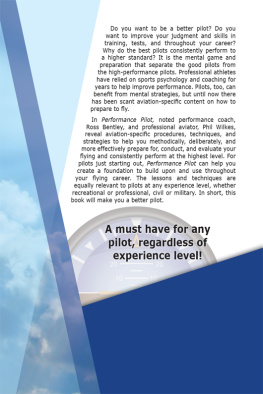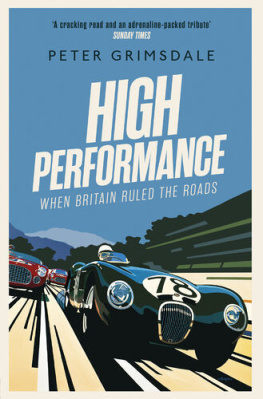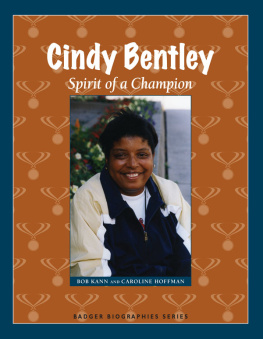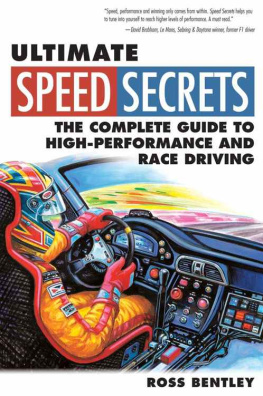First published in 1998 by MBI Publishing Company, 729 Prospect Avenue,
PO Box 1, Osceola, Wl 54020-0001 USA
Ross Bentley, 1998
All rights reserved. With the exception of quoting brief passages for the purposes of review, no part of this publication may be reproduced without prior written permission from the Publisher.
The information in this book is true and complete to the best of our knowledge.
All recommendations are made without any guarantee on the part of the author or Publisher, who also disclaim any liability incurred in connection with the use of this data or specific details.
We recognize that some words, model names, and designations, for example, mentioned herein are the property of the trademark holder. We use them for identification purposes only. This is not an official publication.
MBI Publishing Company books are also available at discounts in bulk quantity for industrial or sales-promotional use. For details write to Special Sales Manager at Motorbooks International Wholesalers & Distributors, 729 Prospect Avenue,
PO Box 1, Osceola, Wl 54020-0001 USA.
Library of Congress Cataloging-in-Publication Data Bentley, Ross.
Speed secrets: professional race driving techniques/Ross Bentley, p. cm.
Includes index.
ISBN 0-7603-0518 (alk. paper)
1. Automobile racing. I. Title.
GV1029.B42 1998
796.72dc21 98-7282
Printed in the United States of America
Contents
Acknowledgments
The most difficult part of writing this book was deciding whom to acknowledge and thankI didn't want to leave anyone out. In reality, almost everyone with whom I've ever had contact in racing has had some influence on me, and therefore, this book. However, it would only be fair to mention a few who have made a huge impact on my life.
First, I want to thank my family for their support, encouragement, and help throughout my career. I've learned everything about commitment, fair play, and hard work from my parents, which, by the way, goes a long way in this sport. They don't know how much I appreciate that. After reading this, I hope they do.
A lot of friends have helped me and taught me much over the years. Although it's not possible to name them all, I hope they know who they are and how much I appreciate all their support. Friendships will always be the most important thing I've gained from racing.
Ive learned a lot from teaching others. Thanks to all the instructors I've worked with for sharing their knowledge with me. The same goes for all the mechanics, engineers, and teams I've worked with. There is a little of each of them in this book.
A big part of this book is a result of what I've learned from Ronn Langford, my "mental coach." Through Ronn, I've learned how to maximize my own performance on a consistent basis. He is also a great friend.
I would like to single out a few people in racing who have given me a lot, including opportunities and knowledge. Tom Johnston, Dale Coyne, Craig T. Nelson, and Lee Paynethank you all.
I've had the opportunity to work with three people in racing who are the absolute best at what they do. No one knows more about driver safety equipment than Kendall Merrill and Bell Auto Racing, and I have learned more about shock absorbers in 2 minutes from Jeff Braun than I have in the rest of my career put together. I thank both of them for their input to this book.
The third person is Michael Cue, whom I believe is the best race team manager in the business. I thank him for sharing with me just a small percentage of his knowledge.
Thanks to Craig T. Nelson, James Weaver, Dr. Brock Walker, Bruce McCaw, and Danny Sullivan for their comments and contributions throughout this book. It s an honor to have their input.
And finally, to my wife, Robin, who is my biggest supporter, fan, coach, confidante, editor... you name it, she does it: Thanks! Without her, we wouldnt be where we are today.
Foreword
Sometime around the beginning of the 1995 IMSA World Sports Car season, Dan Clark, team manager and co-driver of the Screaming Eagles World Sports Car team, and I were looking for a driver to share time with us in the formidable Twenty-Four Hours of Daytona. Dan sent me a tape of four drivers for review. They were drivers of varying experience, age, and monetary requirements, but they were all pros. Hot shoes. Shooters. Jockeys. They were good.
I had watched two tapes and about four minutes into the third tape I called Dan. This guy is fantastic! Look at his handsthey don't move! I thought the tape was in slow motion. There was no effort. He was smooth. He had finesse. The car he was driving was a Chevy-powered Spice, which was not a very forgiving car to say the least, and on a difficult circuit like Daytona where you must be precise, one could expect to see a driver quite active and at times anxious as he fights to control a car that is not behaving. There was no evidence of that with this driver. If anything, it was calm in that cockpit. The shifts were precise, without haste. It was tidy. He was getting the most out of a car that most drivers would find difficult at best to drive at speed. Yet he was not only smooth, he was quick.
That driver was Ross Bentley and he became my teammate, instructor, and mentor (and, on a lighter side, the "pun meister"). As a teammate, Ross shared his racing experience in so many areas. His knowledge of the nuances of the track was invaluable; he knew precisely where, if you were paying attention, you could save a tenth or even half a second.
Ross helped with it all: brakingnot only how and when to apply the brakes, but more importantly as I have learned, how to come off the pedal; pacingwhen to push it and when to relax and wait; car setupa difficult subject because so much of it is related to the driver's feel (and when it's springs and shocks, you begin to think, especially if you are a rookie or novice driver, that setup is closely related to alchemy) but Ross was able to explain it all in the simplest terms; then there were tires, tires, and more tires, pressures, temperatures, wear rates, and so on; and nutritioneat this, don't eat that, workout programs, fluid intake.
It became clear to me that this sport of auto racing was just that, a sport. Ross approached it that way and expected us to follow suit. We did and in the process I became a fan. He knows what he is talking about. I have seen him apply and share his experience with the same ease that he exhibits in the race car, and as a teammate he gave us his best all the time.
For most of 1996 and all of 1997, I had the opportunity to race against Roscoe." He became a competitor and an adversary. Ross was driving for Jeff Jones in the Make a Wish Riley & Scott World Sports Car with Chevy power, and we had a Riley & Scott Ford-powered World Sports Car. We had horsepower. They had Ross. I have never enjoyed racing more, trying to outdo, outmuscle, and out-think Ross Bentley. I was outclassed. It took too much effort to beat a guy whose style was effortless.
Many of the valuable elements of racing that he taught me and other drivers are in this book, including 99 percent of what it takes to drive a car in competition, at speed, at the limit, driving to win, and much more. The 1 percent Ross left out is up to you. Besides that, he is a race driver. He's not gonna tell you everything. After all, he may have to race against you someday.
Craig T. Nelson
Owner/Driver, Screaming Eagles Racing
Malibu, California
Introduction
What does it really take to be a winner in auto racing? What separates the winners from the also-rans? Why do some drivers win more often than others? What can you do to become a consistent winner?

